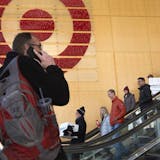Following weeks of jury selection, the trial of fired Minneapolis police officer Derek Chauvin began with opening statements on March 29, 2021. Chauvin is charged with second-degree unintentional murder, third-degree murder and second-degree manslaughter in the killing of George Floyd in south Minneapolis on May 25, 2020.
As required, the prosecution presented its case first. Here are the witnesses who have been called to testify so far.
Witnesses for the prosecution:
1. Jena Scurry, the 911 dispatcher who handled the call that resulted in Chauvin and the other officers responding to the intersection where Floyd was detained. Jena Scurry detailed how she was troubled by seeing on wall-mounted dispatch screens how Floyd's arrest played out on city surveillance cameras. She said she glanced up at the screens and saw a police squad moving "back and forth" as officers dealt with Floyd, then moments later take him to the pavement. Multiple times she looked away and then back to see the same image of the officers keeping Floyd on the pavement. It was then that "something was not right. It was an extended period of time," she said. "It was a gut instinct, now we can be concerned."
Scurry said she called a supervisory sergeant and reported what she saw. "I don't know, you can call me a snitch if you want to but we have the cameras up for [squad] 320's call, and … I don't know if they had to use force or not, but they got something out of the back of the squad, and all of them sat on this man, so I don't know if they needed you or not, but they haven't said anything to me yet," the dispatcher is heard by the jury saying in her call to the sergeant.
2. Alisha Oyler, a Speedway employee at 38th and Chicago who witnessed Floyd's arrest and testified that she recorded several brief video clips of Floyd's arrest and turned them over soon after to police. Oyler said under prosecution questioning that she made the videos because "police is always messing with people ... and it's not right."
3. Donald Williams II, a witness at the scene of 38th and Chicago who urged Derek Chauvin to get off Floyd's neck and to check Floyd's pulse. Williams told the court that as a longtime mixed martial arts fighterhe was familiar with how Chauvin had Floyd pinned to the pavement. Williams recognized it from his training as a "blood choke." He added it can lead to someone falling unconscious. "You see Floyd fade away like the fish in the bag," he said. "He vocalized that he can't breathe and 'I'm sorry.' His eyes rolled back in his head." As Williams watched the viral video shot by a fellow bystander, he told the court that Chauvin was shifting his weight on purpose repeatedly to tighten the hold on Floyd's neck, what the witness called a "shimmy."
4. Darnella Frazier, the teenager, now 18, who filmed the video seen worldwide of Floyd's death outside Cup Foods. "When I look at George Floyd I look at my dad, I look at my brothers, I look at my cousins, my uncles because they are all Black," she said. "I have a Black father, I have Black brothers, I have Black friends. I look at them and how it could have been one of them. It's been nights I've stayed up apologizing to George Floyd for not doing more and not physically interacting and not saving his life, it's not what I should have done it's what he should have done."



